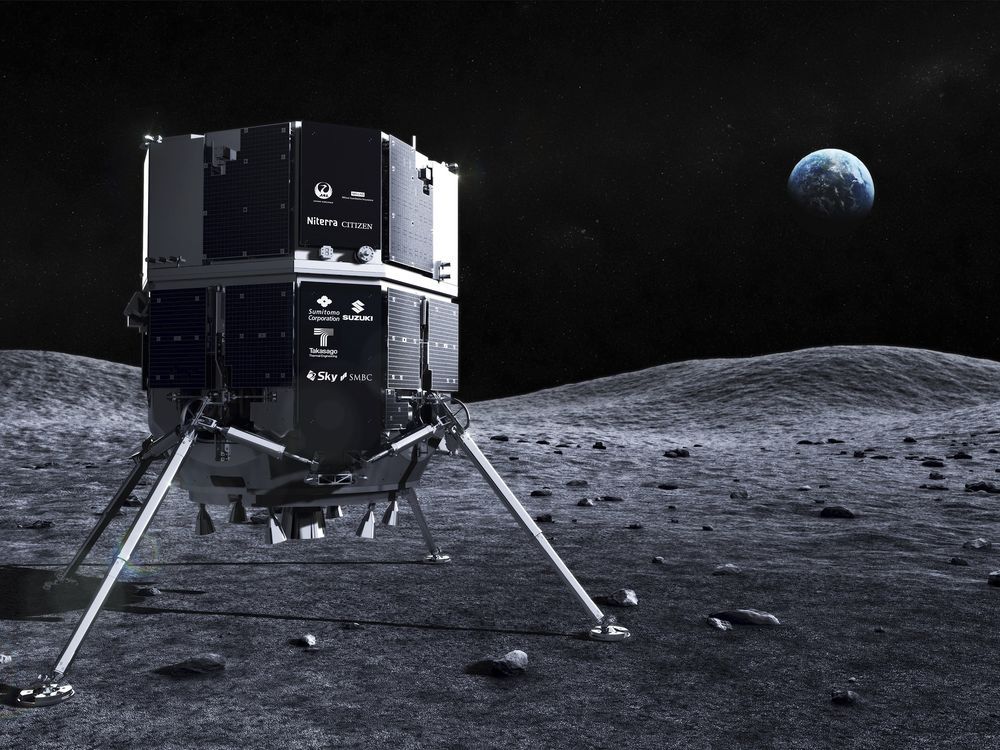Global Courant 2023-04-27 00:11:15
Article content
The Japanese ispace Inc. said his attempt to make the first private moon landing failed after he lost contact with his Hakuto-R Mission 1 (M1) lander when it accelerated unexpectedly and likely crashed into the lunar surface.
Article content
The startup said it’s possible that as the lander approached the moon, the altimetry system miscalculated the distance to the surface.
“Apparently it was free-falling to the surface because it was running out of fuel to activate its thrusters,” Chief Technology Officer Ryo Ujiie told a news conference on Wednesday.
It was the second setback to commercial space development in a week after SpaceX’s Starship rocket exploded spectacularly minutes after lift off from its launch pad.
A private firm has yet to succeed with a moon landing. Only the United States, the former Soviet Union and China have soft-landed spacecraft on the moon, with attempts by India and a private Israeli company also ending in failure in recent years.
Article content
What time is it on the moon? One small step for moon time
Space rookie Jeremy Hansen named as first Canadian astronaut to orbit the moon
Ispace, which works to deliver payloads like rovers to the moon and sell related data, was listed on the Tokyo Stock Exchange just two weeks ago, and a frenzy of excitement surrounding its prospects had since increased its shares sevenfold.
But disappointment led to a plethora of sell orders on Wednesday. After not trading all day, the stock finished 20% lower in a forced closing price determined by the exchange that reflects the balance of buy and sell orders.
Hirokazu Matsuno, Japan’s top government spokesman, said that while it is unfortunate that the mission failed, the country wants ispace to “keep trying” as its efforts were important to developing a domestic space industry.
Article content
Japan, which has set itself the goal of sending Japanese astronauts to the moon by the late 2020s, has had some setbacks in recent times. The National Space Agency was forced to destroy its new medium-lift H3 rocket last month when it reached space after its second stage engine failed to ignite. The Epsilon solid-fuel rocket also failed after its October launch.
Four months after launching from Cape Canaveral, Florida, on a SpaceX rocket, the M1 lander appeared to land autonomously Tuesday afternoon Eastern Time, with an animation based on live telemetry data showing it coming up to 300 feet from the lunar surface.
But by the expected landing time, mission control had lost contact with the lander, and engineers seemed concerned about the live stream as they waited for signal confirmation of its fate, which never came.
Article content
The lander completed eight of the 10 space mission targets that will provide valuable data for the next landing attempt in 2024, Chief Executive Takeshi Hakamada said.
About an hour before its scheduled landing, the 2.3-meter M1 entered its landing phase, gradually narrowing its orbit around the moon from 100 km above the surface to about 25 km, traveling at nearly 6,000 km/h.
At that speed, slowing the lander to the right speed against the moon’s gravity is like slamming the brakes on a bicycle at the edge of a ski-jumping ramp, Ujiie said.
The craft was aiming for a landing site on the edge of Mare Frigoris in the moon’s northern hemisphere, where it would have deployed a baseball-sized two-wheeled rover developed by the Japan Aerospace Exploration Agency, Tomy Co. Ltd. and Sony Group. Corp. It also planned to deploy a four-wheeled rover named Rashid from the United Arab Emirates.
Among other things, the lander carried an experimental solid-state battery made by Niterra Co. Ltd. to measure their performance on the moon.
On its second mission, scheduled for 2024, the M1 will carry ispace’s own rover, while from 2025 it will partner with the US space laboratory Draper to deliver NASA payloads to the moon, with the goal of a permanently manned spacecraft by 2040. to build a lunar colony.








